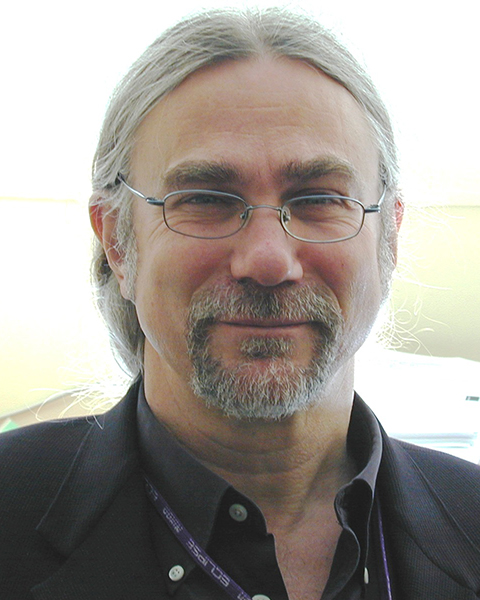The FDA approval of two cell therapies is a major milestone on an exciting journey of discovery. What are some of the important questions still being explored?
At the end of 2017, within months of each other, the first two Chimeric Antigen-Receptor T-cell (CAR T cell) therapy treatments received FDA approval. The approvals marked major milestones for cancer treatments and precision medicine worldwide, bringing the industry closer to realizing the promise of cell and gene therapies, and answered the key question of whether a therapy of this type can get approval. The industry is still at the beginning of this journey, however, while the industry is making incredible progress, there are still more questions than answers today. Here are some key questions that scientists, researchers, and clinicians are exploring to unlock the full potential of cell and gene therapy.
First, let’s clarify what we mean when we talk about CAR T therapies. The two FDA-approved CAR T therapies are examples of autologous treatment: a patient’s own blood cells are extracted, modified to recognize and destroy cancer cells, then returned to the individual patient, now with a new superpower-to find and kill the cancer cells.

How can we expand and refine targeting capabilities?
CAR T cell therapy works through specific immune cells that are re-engineered to target a cancer by identifying and binding to a specific cell-surface protein unique to the cancer cells. For example, acute lymphoblastic leukemia (ALL) and B-cell Lymphoma (BCL) cancers are characterized by CD19, a protein that is normally expressed only on B cells. CD19 is used to target the cancer cells, which the CAR T cells then destroy, resulting in the cancer essentially disappearing from the body. In this process, however, the healthy B cells are also targeted. While this is not optimal, patients can fortunately survive without B cells. This illuminates a core question of CAR T cell therapy, as well as more traditional types of cancer treatment: how can we target only the tumor cells without killing healthy cells that may be necessary for long-term patient survival?
One approach might be to look for unique combinations of specific proteins, rather than a single protein, to target. Can we engineer a T cell so that it will have multiple antigen receptors that will bind to that unique combination of protein molecules? Can we train that T cell so that it will be activated only when all the receptors are engaged? How can T cells be engineered to attack additional types of cancer without attacking healthy cells, as well?
How can we attack solid tumors?
ALL and other blood cancers, also sometimes referred to as liquid tumors, are readily accessible to CAR T therapy. The cancerous cells are lodged in the bone marrow or floating free in the blood, so the modified T cells circulating in the blood can reach the cancerous tissue and attack the cancerous cells. This is not the case with solid tumors.
Solid tumors are not bathed in the same high-volume blood flow that characterizes liquid tumors, and they present a very different set of challenges for scientists working on treatments. Can T cells reach enough of the solid tumor mass to be an effective therapy? What are the cancer identifiers? Can T cells be successfully modified to target and attack solid tumor cells, without attacking the surrounding tissue? And can these modified T-cells be genetically adapted to survive in the harsh environment within tumor tissue? These are just a few of the challenges facing researchers seeking cell therapies for solid tumors.
Can the dosage be further optimized?
The FDA-approved acute lymphoblastic leukemia (ALL) cell therapy has proved very successful in many patients for whom other traditional treatments have failed. In these therapies, the genetically modified T cells are expanded in a bioreactor prior to being infused back into the patient. One key question that has yet to be answered is, how many cells should be returned to get the best results while mitigating any negative side-effects? Should the cells be returned all at once? Should a small portion be returned, and the patient monitored? Is a multi-dose therapy the best strategy? There are probably twenty years of biological research that will be necessary to truly understand the whys and hows of that question. Further clinical trials will help us continuously improve and refine dosages and methods, particularly as we progress from blood to solid tumour therapy.

How can we reduce the risks while expanding our toolbox?
The industry has come a long way, but our understanding of the cellular mechanisms that enable cell and gene therapy is still limited. Imagine stepping into an elevator and pressing the button for your floor. As the doors begin to close, you see someone hurrying to catch the elevator, so you press the “Door Open” button, or even put your hand out to stop the door from closing. Of course, you trust that the elevator will stay open, but you don’t really understand how the controls work to make that happen. Maybe you have some idea about pulleys, weights, and the physics involved, but you certainly would never attempt to fix a broken elevator or modify its function.
The industry currently has a limited set of controls in the cell therapy toolbox. We understand what they do, but not necessarily how they work. For example, viral vectors are used to modify T cells. These viruses, selected for their ability to infect T cells while being otherwise harmless, are modified to express a specific protein, and then added to the T cells. What actually happens when the virus infects a cell? The end result is that the target protein is expressed and affixes to the outside of the cell, but the process is not yet fully-understood. What could prevent–or cause–the virus from triggering an unanticipated reaction, such as activating a cancer gene? What could prevent the virus from reverting or mutating to a harmful form? Though scary to think about, these are real questions that speak to the underlying causes and triggers of genetic expression, a science that is still in its infancy.
The road ahead
There are currently hundreds of cell and gene therapies in development and in clinical trials. I believe that some of these will be successful, resulting in effective treatments, or even cures, for some of the most difficult diseases. But as a scientist, I’m also optimistic about those that fail: even the therapies that never become an approved drug will increase our understanding and body of knowledge, help us answer these questions, and of course, raise additional questions—advancing science and ultimately saving lives.
About the author
Dr Stephen Minger is a pioneer in stem cell and regenerative biology. His career includes leadership roles in both academia and the life sciences industry, and senior advisory roles to national and international governmental organizations. He currently serves as the Director of SLM Blue Skies Innovations Ltd, providing expert analysis in emerging healthcare technologies for the life sciences investment community.